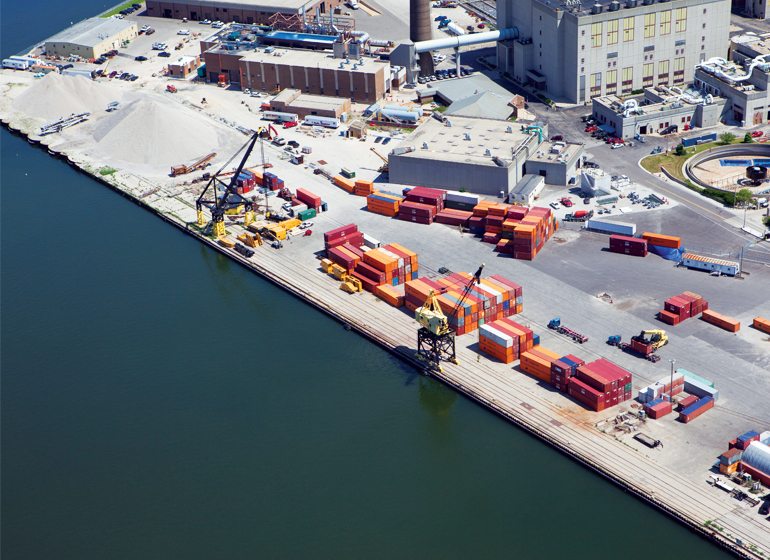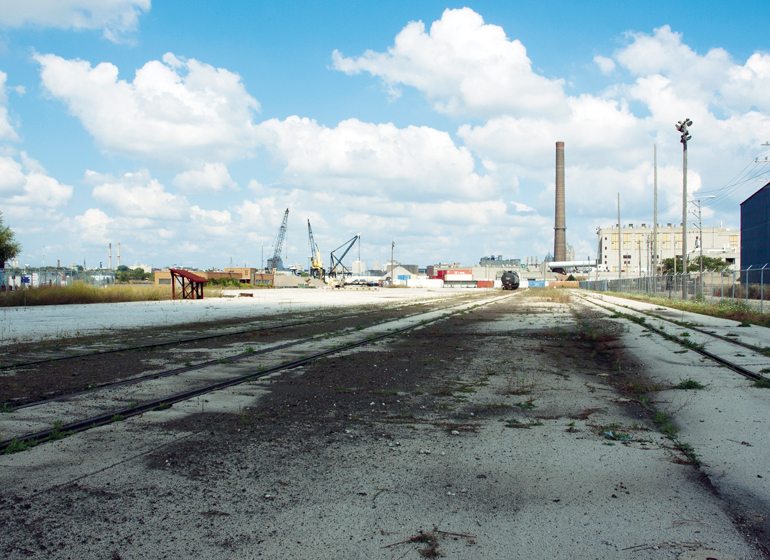Almost from the day Canadian Pacific Railway closed down its intermodal container service at Port Milwaukee in September 2012, users of the service began asking when the port would find a way to bring the service back.
But for nearly five years, Peter Hirthe couldn’t get either of the Class I railroads operating at the port to even discuss the idea.

“What we’ve been trying to do is look for a window of opportunity with the railroads,” said Hirthe, senior trade development representative at Port Milwaukee. “We had multiple meetings over the last several years where we couldn’t get the engagement.”
The window he was looking for opened earlier this year as both railroads, Canadian Pacific and Union Pacific Railroad, had new management at various levels, including a new chief executive officer at CP.
The chance for a new beginning presented a chance to redevelop business relationships and Hirthe made it a point to put intermodal on the table. The goal wasn’t necessarily to get either to commit immediately to restarting the service, but instead to explore the feasibility.
Both railroads were willing to discuss intermodal, but one of their first questions was how much demand there was for it. “Union Pacific is evaluating the feasibility of providing intermodal service to Port Milwaukee. While we currently provide manifest service to the region and have rail access to the port, establishing intermodal service would require additional investments, likely from public and private funding sources. We look forward to continued discussions about supporting economic growth in the state of Wisconsin and the Milwaukee region.”
When the intermodal service was shut down at Port Milwaukee, it wasn’t because no one was using it. There just wasn’t enough volume for the railroad to operate as efficiently as possible, especially when management put an emphasis on moving containers quickly.
“I think the volume we moved through here, it was profitable,” Hirthe said. “They wanted to move from the West Coast to Chicago as quickly as possible and so we were a speed bump on that velocity.”
Intermodal drayage, in which containers or truck trailers make long-haul movement by rail and connect to trucks or ships at one or both ends, has grown in the United States from 3.1 million containers in 1980 to a high of 13.7 million in 2015, according to the Association of American Railroads.
More than 5.8 million containers and trailers originated or terminated in the Chicago market in 2014, according to the association, making it the largest in the country.

With that much volume, the Chicago market is known for congestion at the rail yards and on the highways. When Milwaukee’s intermodal service closed, companies had to truck their products down to Chicago before they could go out on railways to their final destination.
Crossing over the state line adds costs for Wisconsin companies. Hirthe has heard from some firms spending more than $1 million per year on tolls alone, and some municipalities in the Chicago area are looking at imposing their own permit requirements on incoming trucks. On top of those costs, there’s the simple fact that having to drive to Chicago limits the number of trips a driver can make in a day, compared to coming only as far as Milwaukee.
“There’s layers of cost right now that are only involved in the intermodal process for Wisconsin manufacturers because they have to go so far and they have to cross state lines,” Hirthe said.
A 2012 Milwaukee Common Council resolution urging CP not to shut down the service estimated going to Chicago would cost companies an additional $600 per container.
The railroads already have an idea of how much demand there is, since they both operate in Chicago. Hirthe pointed out both only know their own business and no one has a sense of the whole picture.
Hirthe had plenty of anecdotal examples of the demand, but he needed to take all those voices and actually quantify them. He reached out to the Metropolitan Milwaukee Association of Commerce to begin a survey of potential intermodal users about what kind of international and domestic quantities they would have; if they weren’t using intermodal now, whether they would if it were in Milwaukee; and other details.
Reaching out to MMAC quickly translated into a much wider statewide partnership that brought state agencies and other organizations onboard.
“It was one phone call and suddenly the next day you had DOT, WMC, WEDC, all the acronyms you can think of, DATCP got involved, all the stakeholders,” said Katie Henry, executive director of MMAC’s World Trade Association.
Jason Culotta, senior director of government relations for Wisconsin Manufacturers & Commerce, said it made sense for his organization to get involved, particularly for members in southeastern Wisconsin and the Green Bay and Fox Valley area, especially if it could drive down costs and make businesses more efficient.
The outreach included a joint email message to members from the heads of WMC and MMAC. The survey went out in July and again in August. Hirthe plans to keep collecting data, but he thinks there’s sufficient information to show there is enough demand.
“We think we’ve got enough of a snapshot now … that they’ll be able to do some serious number crunching,” he said. “They have existing networks and existing systems that they have to add this to and there’s an impact.”
Hirthe hopes to receive solid feedback from the railroads by the end of the year, if not sooner. Even if the railroads aren’t able to make intermodal service in Milwaukee work immediately, Hirthe is hoping they will offer him a roadmap to making it a reality.
There are still open questions around whether there will be a balance between inbound and outbound traffic, how the service could evolve, the potential impact of a proposed cross-lake shipping operation and whether the port is the ideal location.
“The goal of this ultimately is to have it here (in the region),” Hirthe said. “At the moment the port’s in the center of it, but the overall effort long-term is not port-specific.”
The previous intermodal service ran in a roughly 10-acre space near the city heavy lift dock at the port. That area is now used for some storage and short-term operations, but the infrastructure is still ready.
“We could do what we were doing within a short period of time, I would say months,” Hirthe said.
A decision to restart the service is not imminent, but supporters of the effort are optimistic.
“We went from neither railroad really wanting to talk intermodal to both, so it’s at least positive that we’re engaged,” Hirthe said.
Culotta agreed: “We’re also optimistic, we’re hopeful it comes to pass because it just makes doing business in Wisconsin easier to do.”
Jeff Fleming, a spokesman for the port and the Milwaukee Department of City Development, said workforce and transportation are consistently the top two issues considered in making relocation or expansion decisions, and adding intermodal would check an important transportation box.
“That helps the concept of adding new businesses and improving the overall health of the business climate here,” he said.

